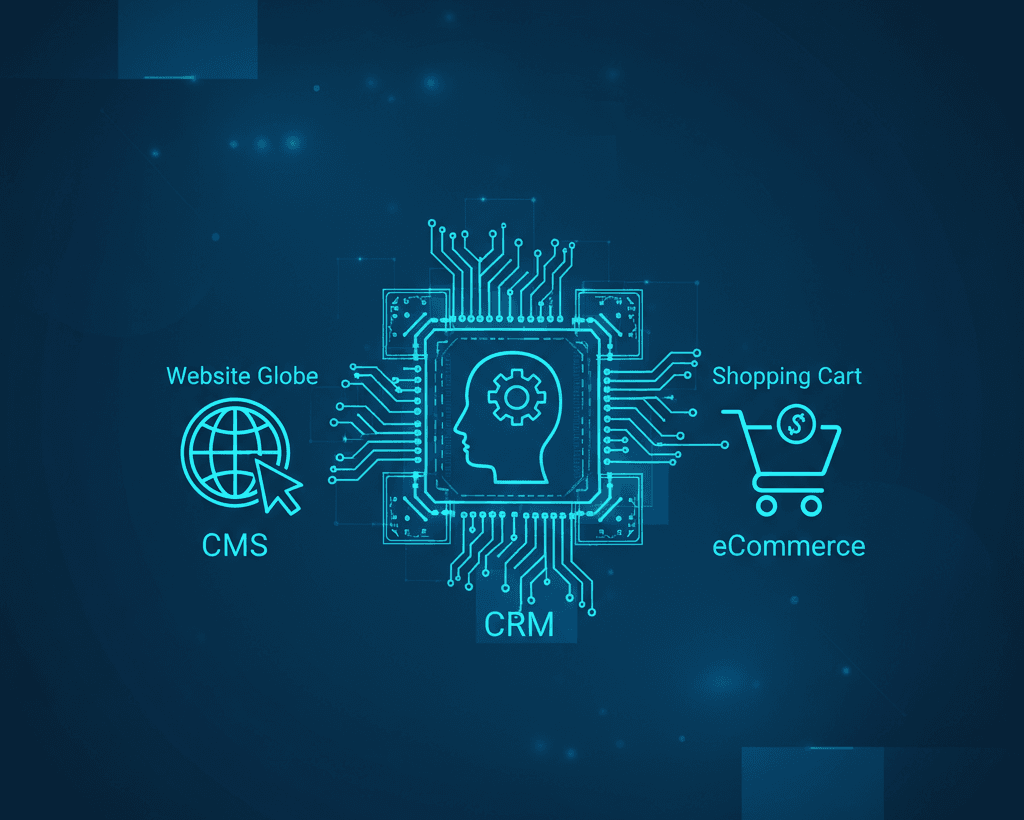The digital enterprise today is a multi-headed beast. You have a high-performance CMS like Sitefinity or a robust intranet built on SharePoint managing content. You have Salesforce or Zoho driving customer relationships and sales pipelines. And you have a transactional platform like Shopify Plus or Adobe Commerce handling money. They are all necessary, but for too many businesses, they simply don’t talk to each other.
This creates the “Fragmented Customer Experience”. The content your marketing team publishes is generic. The offer your sales team makes doesn’t account for a recent website download. The abandoned cart email fails to mention the customer’s recent service ticket.
This isn’t a technology problem; it’s a failure of digital orchestration. Digital orchestration is the strategic process of designing seamless, automated, and personalized customer journeys by using a central layer often a Customer Data Platform (CDP) to unify data flow between your core systems: CMS, CRM, and eCommerce.
The Cost of Disconnected Systems
Operating with disconnected CMS, CRM, and eCommerce systems carries hidden costs that erode profitability and agility:
Generic Content: Without real-time CRM data, your CMS can only serve generalized content. This drops engagement, as “personalized content drives a 5X increase in engagement”.
Wasted Sales Time: Sales teams waste cycles chasing leads that aren’t marketing-qualified (MQLs) or, worse, pitching products a customer already owns.
Inventory and Order Sync Errors: A lack of real-time sync between eCommerce and ERP/CRM can lead to stockouts, delayed fulfillment, and customer frustration. Inventory accuracy must be 99% to meet B2B demands.
These silos lead to fragmented processes, causing staff frustration and higher operational costs due to duplication and inefficiencies.
The Blueprint for Digital Orchestration
Moving to a unified model is a strategic transformation, not a simple technical lift. It requires defining a clear data flow.
Centralize the Customer Data (The CRM Core):
The CRM (e.g., Salesforce) must become the single, unified repository for customer history, contact details, and intent data. The CMS (Sitefinity/SharePoint) and eCommerce platform push behavioral data (page views, downloads, cart actions) into the CRM/CDP, enriching the customer profile in real-time.
Orchestrate Experiences (The CDP/DXP Layer):
Platforms like Sitefinity, acting as a Digital Experience Platform (DXP) with an integrated CDP (Sitefinity Insight), use the unified customer profile to make real-time decisions. This allows for no-code personalization in the CMS, automatically adjusting web content, offers, and calls-to-action based on the customer’s latest purchase history, service ticket status, or geography.
Automate the Handoffs (The Integration Glue):
This is where low-code tools like Power Automate shine. They create the “glue” that connects the core three systems without complex, fragile custom code. For example:
A form submission in the CMS automatically creates a new lead in the CRM.
A product purchase in eCommerce triggers a “post-purchase follow-up” workflow in the CRM/Marketing Automation platform.
A low inventory alert from the eCommerce platform automatically creates a “Restock” task in a SharePoint Planner list for the operations team.
The Future: Systems of Action
The ultimate goal of digital orchestration is to evolve from merely recording data to creating Systems of Action. AI-powered tools, like Salesforce Agentforce or Microsoft Copilot for SharePoint, use this unified data to set goals, take action, and automate complex tasks autonomously.
Whether you are upgrading legacy CMS (like a Sitefinity 11.x to 14.x migration), modernizing a SharePoint intranet, or choosing a CRM that scales, your underlying priority must be integration. Your CMS, CRM, and eCommerce platforms are not standalone apps; they are instruments in an enterprise orchestra. We are here to help you conduct it.




